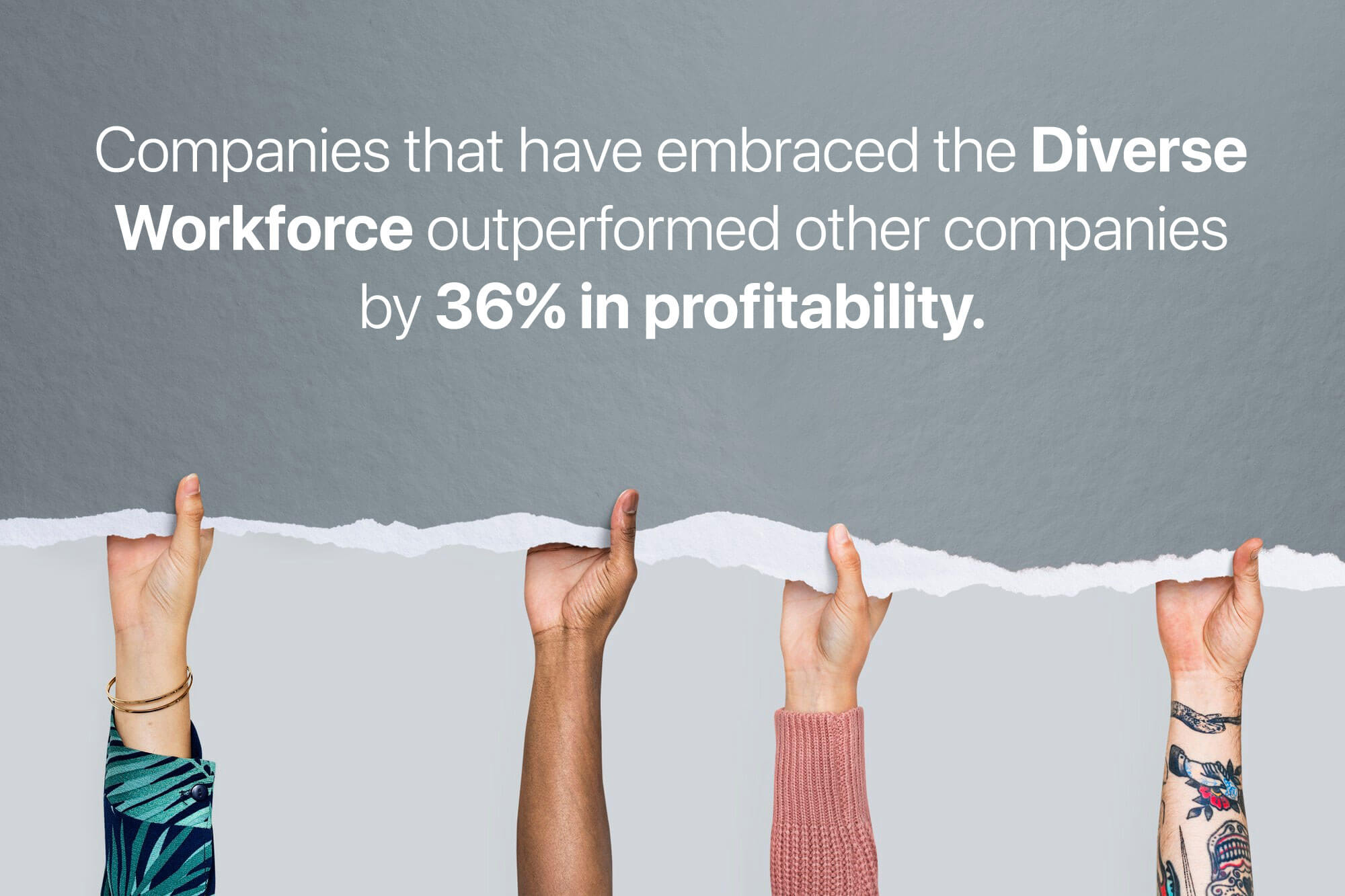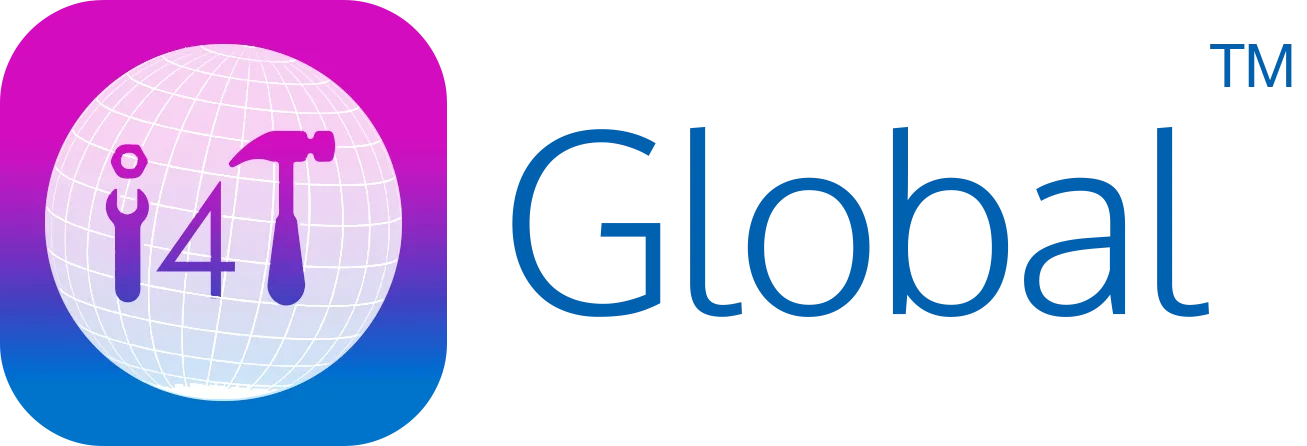A diverse mix of voices leads to better discussions, decisions, and outcomes for everyone.
Sundar Pichai (CEO Of Alphabet Inc)
Tweet
Diversity in the workplace is a topic that many CEOs and managers in various businesses around the world are familiar with. In practice, many world leaders are working to create a diverse workforce. These include people who have distinct qualities, behaviors, abilities, beliefs, and so on.
Despite the challenges of the Covid-19 pandemic, CEOs have to consider the welfare of their employees. In the 21st century, they should make decisions about downsizing while considering the importance of implementing diversity in the workplace.
Today in 2022, a diverse workforce is a necessity that many companies cannot afford to put aside. Therefore, with no doubt, we can tell that companies are working towards building a safe, diverse, equal and inclusive workplace. This article will discuss 3 components of Workforce Diversity
- The importance of a diverse workforce
- How it can benefit companies, and
- Who you should have in the team.
So, without wasting much time, let us identify what workforce diversity means!
What is Diversity in the Workforce?

Definition:
Similar and different in terms of age, cultural background, physical abilities and disabilities, color, religion, gender, and sexual orientation.
The paper goes on to say that people differ not just because of their gender, culture, race, social and psychological features. Perspective also plays a role. This means that there is more to diversity than what meets the eye.
So How Does Diversity Affect the Workplace?

Let me start by giving you a perspective of how diversity can affect the workplace. According to a recent McKinsey and Company report, organizations that focus on building a diverse workforce have better productivity, success, and profitability, and are believed to be significantly more effective than companies that choose to reduce diversity.
Studies suggest that for organizations to captivate the global market. Along with succeeding in delivering their products and services, they must think more about diversifying their workforce.
There are two types of diversity organizations must focus on, Inherent Diversity and Acquired Diversity. Inherent diversity includes age, gender, race, ethnicity, what field technicians choose to wear and sexual orientation. Whereas, Acquired diversity includes: cultural differences, religion and beliefs.
Most organizations around the world focus on gender equality, ethnic and cultural diversity while recruiting employees for executive teams.
Companies with fewer or no women in the workforce underperformed. This was in comparison to other companies who possessed 30 percent of women executives.
As for ethnic and cultural diversity, companies that have embraced the diverse workforce outperformed other companies by 36% in profitability.

McKinsey and Co’s report indicates a widening gap between inclusion and diversity. Leaders and companies all around the world are yet to embrace diversity to see fruitful results within and outside their organizations.
According to existing research and studies, a diverse workforce has several benefits that outweigh the possible barriers that businesses experience when attempting to execute a Diverse, Equity, and Inclusion (DE&I) Strategy.
What are the Benefits of Having a Diverse Workforce
Innovation & Different Perspectives
A team of 5 or 7 people working together will be like-minded and develop similar ideas. However, if this team is created with a mixed diverse set of people, then the outcome can be different.
According to a study done by Deloitte, you will be able to boost innovation 20% more when you have workforce diversity.
This is because of the change in their thinking patterns. The experiences and skills they have with their unique abilities can be put to use for the team.
By building a diversified workforce, you are indirectly creating a well-rounded team. They will be capable of producing unique and mind-blowing solutions for the organization. With increased innovations, team members will have an excellent opportunity to broaden their experiences and talents.
Sharing and learning other people’s perspectives and thinking patterns will be beneficial. You can be assured that your teams will not be homogenous.
Greater Creativity
When people are exposed to different perspectives, and different backgrounds, they tend to learn more which leads to increased creativity. A set of different people see the same product in various ways. Putting together a diverse workforce will improve your team’s creativity. Therefore, the company will benefit from fresh, new ideas in every rotation.
A refreshing example of generational diversity in the workplace can be seen in Walt Disney.
Increased Productivity
According to McKinsey’s report companies who have a diverse workforce become 35% more productive.
Truth to be told, Diversity and Productivity are most often considered to be on the same page.
The positive effects of workforce diversity in an organization will eventually lead to employees being satisfied. Businesses will witness an increase in their employee morale and an increase in their desire to work efficiently and effectively. Thus, as a result, increasing the company’s productivity levels.
Positive Company Reputation
In an overall world view, companies that embrace and welcome multicultural diversity in the workplace are often considered great employers. When employees apply for jobs in diverse organizations, they tend to feel welcomed, and more accepted.
The positive impact of diversity will lead the business to increase sales and hire motivated, skilled, and passionate employees.
Increased Customer Satisfaction
Customers love what they look at. Organizations that have accepted diversity in their workforce are a true representation of the society we live in.
In a sense, your business will talk to customers in a different and more acceptable tone. Customers will feel like they can relate to the business more when they see the business promoting diversity in the workplace. Businesses can hire people of different races, languages, and religions to better connect with a diverse spectrum of customers.
One of the advantages of diversity for the company is the ability to appeal to a broader and global clientele.
Better Company Culture
When the organization practices a diverse workforce it encourages employees to deliver the best performances.
Diversity and inclusion in a business have proven to reduce the number of employee turnover.
When the employees are happy the business productivity increases. Also, the organization will save time and money spent on recruiting.
There has been a 75% leadership culture created inside the teams in firms that were committed to diversifying their workforces. This was shown in the McKinsey’s report before and after the Covid-19 lockdowns
What are the Barriers to Creating a Diverse Workforce?

1. Prejudice
In the society we live in, several people cannot tolerate the idea of having different people among them. Some individuals or businesses dislike recruiting a diverse workforce to join them in business, regardless of color, gender, religion, or ethnicity.
This has led to many acts of sexual harassment at the workplace, racism, or religious discrimination. Prejudice at a workplace can be dangerous, and uncomfortable for many people. Developing a strategy with guidelines will ensure that no individual is bullied or discriminated against.
2. Communication
One of the most common barriers organizations face when they diversify their workforce is the communication gap between employers and employees. When a company develops to a worldwide market and hires new employees, they frequently experience communication challenges.
As a result, this communication barrier can affect productivity and effectiveness in the business. Whether the employees are behind a digital screen or face to face, bridging these communication gaps is essential. Companies can either hire a translator or provide language training courses.
3. Different Cultures – Different Traditions
Learning different cultures and ideas is one of the benefits of diversity. Organizations sometimes find it challenging to manage a large diverse collection of individuals who have different beliefs about culture and traditions.
The difference can lead to errors and conflicts within the teams. Organizations can overcome this barrier by teaching employees and employers to understand and respect each other’s traditions and cultural values.
What Can You Do To Manage Workforce Diversity
Diversity is an important topic that has existed for many years now. For organizations to be more prepared in welcoming diversity in their businesses, they need to implement a smart strategy. Here are some tips that can help you manage workforce diversity.
– Diversity is Not a Buzzword- In the industries there are numerous buzzwords being used to gain attention. However, diversity should not be one of them.
Many organizations who try to keep up with the trends and social movements in the industries often fall into traps that promise they can achieve a successful diverse workforce.
Registering to various digital tools and programs promises you an effective diverse workforce. However, you must recognize that diversity and inclusion must be self-learned and practiced for your business to thrive.
– Incorporate diversity strategies into the recruitment process– Companies attempting to develop a diverse workforce environment must begin with the HR department. When hiring employees, make a note to hire from different races, ethnicities, gender, etc. Take a small step towards building a small diverse team and gradually expand when you are sure of growth.
– Build an emphatic culture–
Empathy is the key to connecting with different types of people.
When you introduce diversity and inclusion in your business, you will have many barriers to overcome. However, employees should not feel apathy.
As a leader, you need to accept the mistakes and motivate your employees also to do the same. Being empathic is a great way to start unlocking another person’s potential.
– Keep an open mind – You cannot inspire your teams to collaborate if you do not possess an open mind. You need to recognize people for their talent, skills and encourage each other to experience it as a team.
Explore engaging ways for diverse team members to collaborate and get to know one another better. In return, this will create a more successful and productive workforce.
– Set standard rules – Regardless of your employee’s gender, ethnicity, or religion. Establishing uniform rules and regulations to maintain discipline will aid in maintaining a comfortable working environment.
How can inclusion matter for organizations & Industries?

Diversity and inclusion go hand in hand.
A company deciding to pursue workforce diversity must invest in inclusive policies that provide equal opportunity regardless of background or views.
Let’s take the Field Service Management (FSM) industry as an example of diverse and inclusive workplace practice. You recognize that the demand for Tradespeople in the industry is higher than before.
This also includes hiring Tradeswoman to complete the jobs. Women are pursuing a profession with the FSM industry in the aim of working alongside their peers of the opposite gender. Like the rest of the industries around the world, the FSM sector also has some major challenges. This includes gender discrimination when it comes to doing the same jobs.
As a result, many Tradeswomen are underpaid or do not get hired to undertake the same jobs as males.
So how does inclusion matter in all of this?
What is the definition of Inclusion?
The practice of providing everyone with equal access to opportunities and resources for anyone who might not otherwise acquire them.
Inclusion also refers to giving equal opportunities for groups based on gender, race, physical and mental disabilities and so on.
How can an organization approach inclusion in the workplace? There are some ways through which business leaders can develop Inclusion and Diversity (I&D) strategies. Firstly, the organization can use a systematic approach for diverse representations and thereafter, leaders should take accountability for the I&D.
Along with that, they should also focus on implementing equality, openness and a sense of belonging for the employees. Thereby, firms can eliminate bias and discrimination in the workplace. They can be providing equality of opportunity for all individuals, male or female.
Who should you have in the team?

>A strong diverse team will stand as a foundation for your business in many ways. You must manage the diverse workforce to be productive and successful. Poor Management will result in missed deadlines, conflicts, discomfort, and ineffectiveness.
The final question you must ask yourself when employing a diverse set of people is: Who should be on the team?
Here are 4 types of people who can benefit your business.
- Goal-oriented Employees
The employees you hire must be able to deliver results; rather than merely getting the job done. You must ensure that the employees you hire are goal-oriented and passionate about driving the organization to success.
The benefits that a diversified group of people can bring to a company, includes reaching global markets and building brand awareness.
- Team Players
Be an individual but be a team player first
Diversity in a team brings together creativity, productivity and effective results as mentioned above. While you have a diverse set of personalities, ages, ethnicities, and so on, each individual is unique to the team.
Be certain that the person you hire is a team player. An individual who is willing to contribute to the team’s overall performance with an open mind. Also, someone who is willing to share the workload.
- Open-Minded Leaders
A successful team cannot reach its full potential without a great leader to lead the way. A strong diverse team should have a leader who can be trusted and respected. When hiring a leader, ensure that they are capable of keeping the team together. They should motivate other team members to contribute to give their best when accomplishing tasks.
A prejudiced leader will not be able to manage a diverse group and create a comfortable working space for everyone.
- Women in leadership roles
Many studies have proved that women hired for leadership roles in organizations encourage young minds to evolve and perform better. Research from McKinsey highlights that women leaders are champions of DEI- in comparison to men
In conclusion,
The core strategy to start recruiting a diverse workforce for your company starts with adopting and strengthening the HR strategy. This will help the business to work toward creating an equal workplace environment for every individual.
Here are 3 HR advice that you can take to build a diverse workforce:
– Hire from a diverse group of talent
– Have a diverse interview panel
– Be sensitive and provide training for all new and old employees.
Diversity and Inclusions can be a challenge for many businesses with hybrid working conditions- the new normal work routines. Nonetheless, business leaders must prioritize inclusion and diversity policies if they want their company to prosper despite the obstacles.
Hot off the press!
Get the latest industry news and articles delivered right to your inbox!

By i4T Global Team
With our cutting-edge technology and in-depth knowledge of how the Field Service Management sector operates, the i4TGlobal Team loves to share industry insights to help streamline your business processes and generate new leads. We are driven by innovation and are passionate about delivering solutions that are transparent, compliant, efficient and safe for all stakeholders and across all touch points.
Facebook
Twitter
Linkedin
Instagram
Recent articles that may interest you as well..

